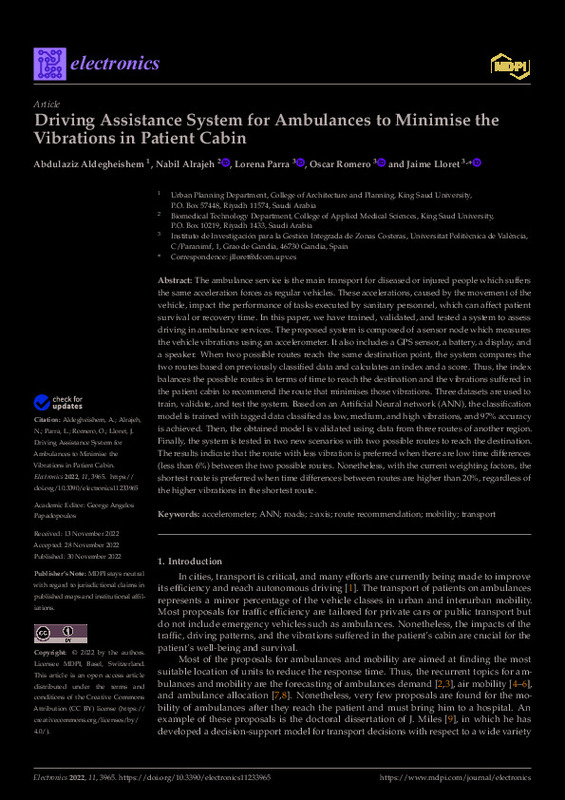JavaScript is disabled for your browser. Some features of this site may not work without it.
Buscar en RiuNet
Listar
Mi cuenta
Estadísticas
Ayuda RiuNet
Admin. UPV
Driving Assistance System for Ambulances to Minimise the Vibrations in Patient Cabin
Mostrar el registro completo del ítem
Aldegheishem, A.; Alrajeh, N.; Parra, L.; Romero Martínez, JO.; Lloret, J. (2022). Driving Assistance System for Ambulances to Minimise the Vibrations in Patient Cabin. Electronics. 11(23):1-19. https://doi.org/10.3390/electronics11233965
Por favor, use este identificador para citar o enlazar este ítem: http://hdl.handle.net/10251/200290
Ficheros en el ítem
Metadatos del ítem
| Título: | Driving Assistance System for Ambulances to Minimise the Vibrations in Patient Cabin | |
| Autor: | Aldegheishem, Abdulaziz Alrajeh, Nabil | |
| Entidad UPV: |
|
|
| Fecha difusión: |
|
|
| Resumen: |
[EN] The ambulance service is the main transport for diseased or injured people which suffers the same acceleration forces as regular vehicles. These accelerations, caused by the movement of the vehicle, impact the performance ...[+]
|
|
| Palabras clave: |
|
|
| Derechos de uso: | Reconocimiento (by) | |
| Fuente: |
|
|
| DOI: |
|
|
| Editorial: |
|
|
| Versión del editor: | https://doi.org/10.3390/electronics11233965 | |
| Código del Proyecto: |
|
|
| Agradecimientos: |
|
|
| Tipo: |
|









